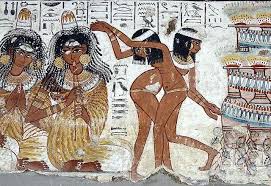
The Evolution of naturist Massage
Naturist massage, a practice rooted in the belief that a naked body fosters a deeper connection with nature and oneself, has undergone a fascinating evolution over the past century. From its humble beginnings as a niche movement to its current status as a widely accepted form of holistic therapy, naturist massage has experienced significant changes in both perception and practice. Let’s explores the historical journey of naturist massage, tracing its evolution through the decades.
Early 20th Century: A Modest Beginning
The early 20th century marked the emergence of naturist ideologies across various domains, including health and wellness. Naturist movements, emphasizing a return to nature and the rejection of societal constraints, gained traction. This era laid the foundation for naturist massage, with early practitioners exploring the connection between nudity and therapeutic touch.
1930s-1950s: The Golden Era of Nudism
The 1930s to 1950s witnessed a surge in nudist colonies and the acceptance of nudity as a form of liberation. This cultural shift contributed to the growth of naturist massage, with individuals seeking a holistic approach to well-being. Masseurs and masseuses began to incorporate natural surroundings into their practice, moving beyond traditional indoor settings.
1960s-1970s: The Counterculture Movement
The counterculture movement of the 1960s and 1970s further propelled naturist massage into the mainstream. The rejection of societal norms, coupled with an increased interest in alternative lifestyles, led to a surge in the popularity of naturism. Massage practitioners embraced a more spiritual and free-spirited approach, emphasizing the importance of body acceptance and self-discovery.
1980s-1990s: Integration into Holistic Wellness
As the wellness industry expanded, naturist massage evolved to align with broader holistic principles. Spa resorts and wellness centers began offering naturist massage services alongside other alternative therapies. The focus shifted towards promoting not only physical relaxation but also mental and emotional well-being. This era saw the development of codes of conduct and ethical guidelines within the naturist massage community.
2000s-Present: Mainstream Acceptance
The 21st century witnessed naturist massage shedding its niche status and gaining widespread acceptance. The practice became more refined, with trained professionals emphasizing the therapeutic benefits of touch in a naturist setting. Research into the psychological and physiological effects of naturist massage contributed to its recognition as a legitimate form of holistic therapy.
Contemporary naturist massage is characterized by a diverse range of approaches, including Swedish, Thai, and Ayurvedic techniques. Specialized training programs ensure that practitioners maintain a high standard of professionalism and ethical conduct. As naturist massage continues to evolve, there is a growing emphasis on inclusivity, diversity, and body positivity.
Transformation That Has Taken a Century
The evolution of naturist massage over the last century reflects broader societal changes in attitudes towards nudity, wellness, and alternative therapies. From its modest beginnings rooted in naturist ideologies to its current status as a mainstream holistic practice, naturist massage has undergone a remarkable transformation. As we move forward, it is exciting to witness how this ancient practice continues to adapt and thrive in response to the ever-evolving landscape of health and well-being.